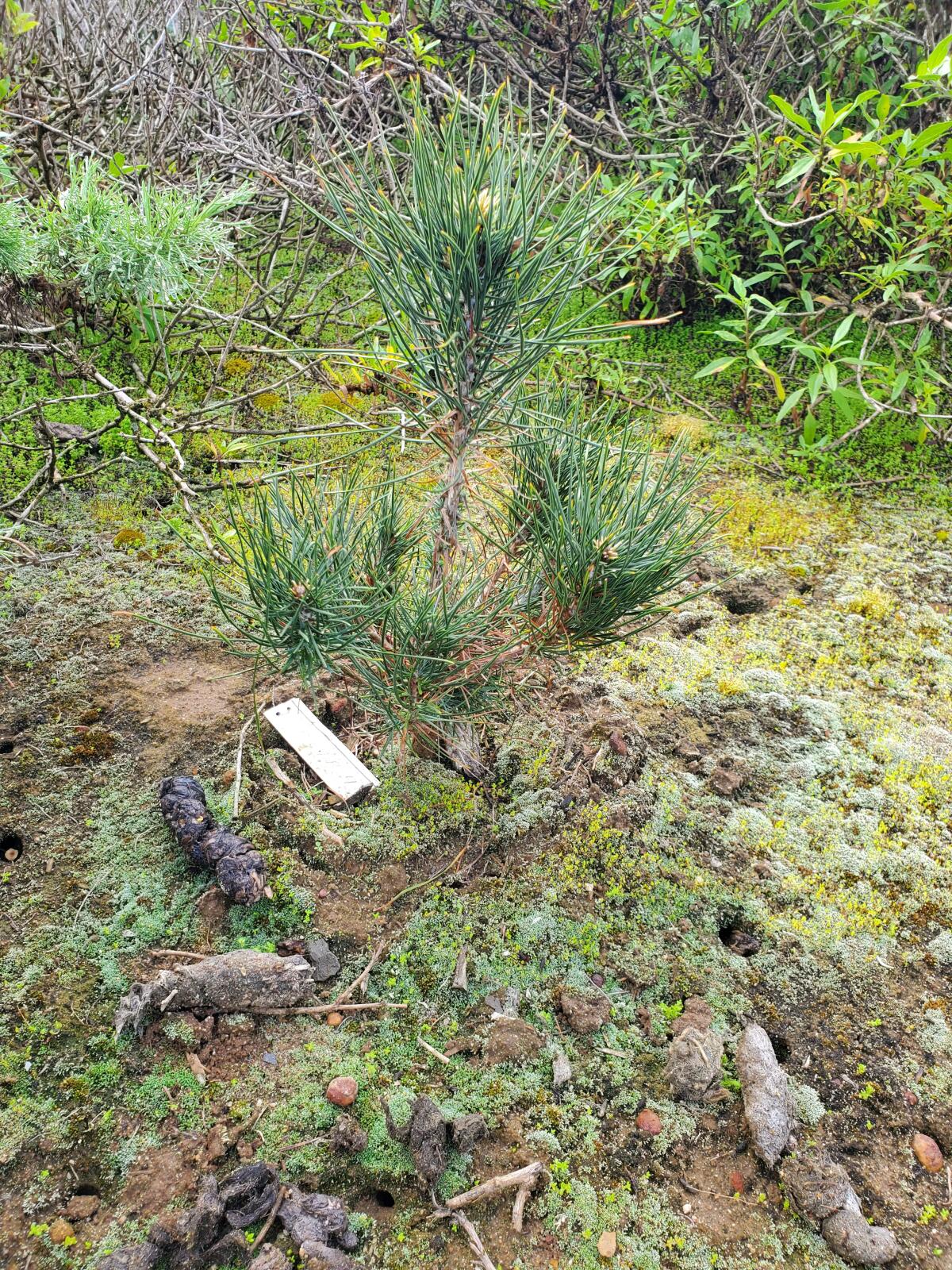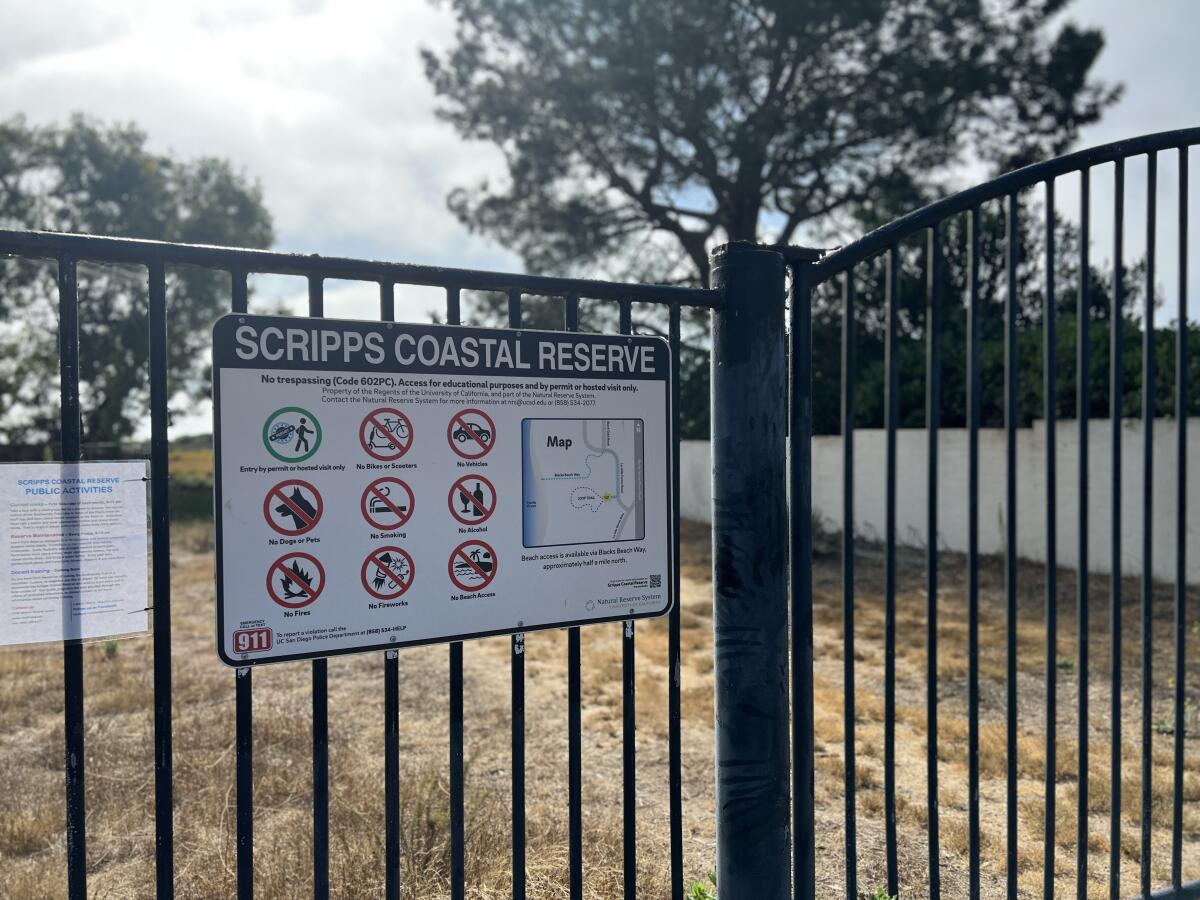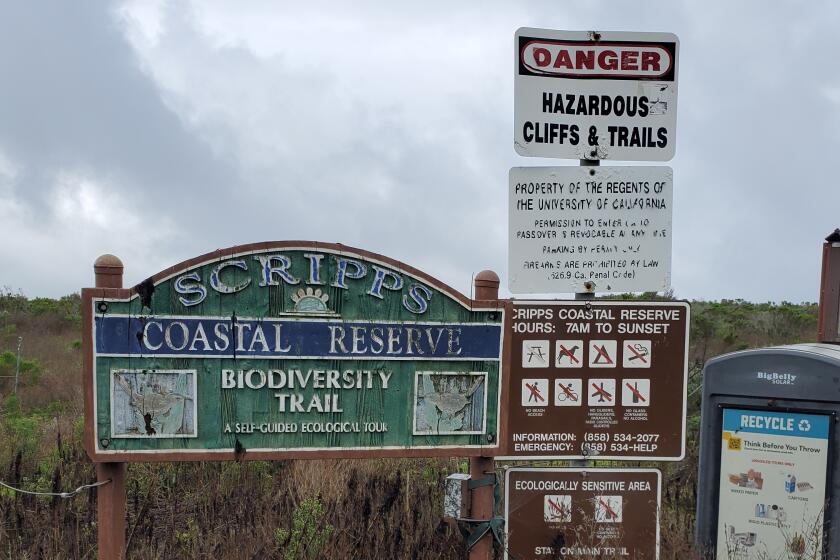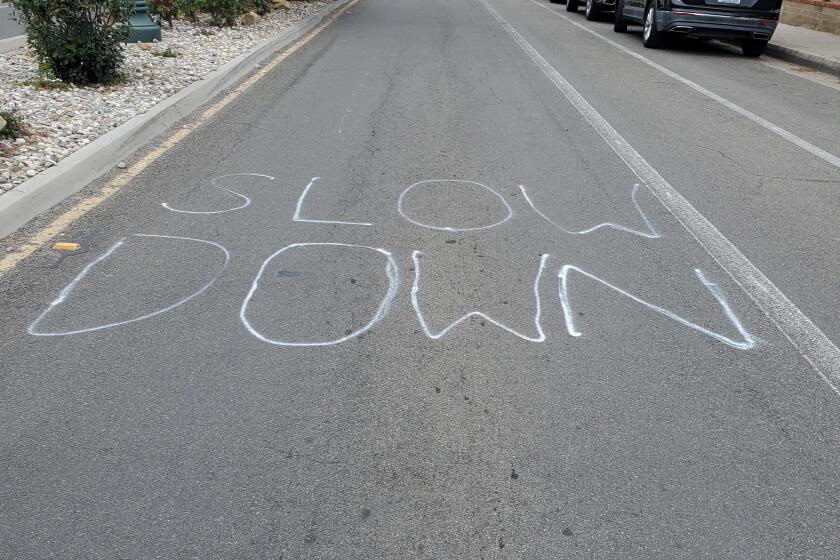Coastal Commission has many questions for UCSD about Scripps Coastal Reserve — and hopes for more access

An initial response to the university’s application for a permit to continue limiting public access to the scenic site urges exploration of ‘alternatives that afford a level of access more similar to the time before the 2020 closure.’
As it has with many people in La Jolla, UC San Diego’s plan to maintain limited public access at the Scripps Coastal Reserve has prompted many questions from the California Coastal Commission.
In January, UCSD — which administers the scenic property adjacent to the Scripps Institution of Oceanography — filed an application with the Coastal Commission for a coastal development permit and made a twofold request: continued “managed access” to the site and retroactive approval for the existing gate.
In a five-page response including questions and requests for more information, commission staff states that while it generally supports efforts to balance protection of the site with public access, it also supports exploration of alternatives to what UCSD is proposing.
The university’s responses to the letter must be submitted by Sunday, April 7, for the application to be considered.
Andrew Willis, enforcement staff counsel for the commission, told the La Jolla Light on March 27 that “we did get a preliminary response from UCSD that it is optimistic it can provide us with the requested information by the deadline.”
UCSD representatives could not immediately be reached for comment.
Get the La Jolla Light weekly in your inbox
News, features and sports about La Jolla, every Thursday for free
You may occasionally receive promotional content from the La Jolla Light.
The reserve encompasses nearly 1,000 acres, including an upland area called the “Knoll” or “Cliffs” and the shoreline and Marine Protected Area below the cliffs. It can be viewed from a half-mile loop trail along what is known as the Mesa across the top of the reserve.
The property has been mostly closed to the public since the beginning of COVID-19 pandemic restrictions in March 2020. It was partially reopened in January 2022 for volunteer maintenance from 8 to 10 a.m. Fridays and a docent-led tour that is offered from 9 to 11 a.m. the first Saturday of each month.
Before the restrictions, the reserve was open from 7 a.m. to sunset daily. Now it is closed off by a gate that is locked unless tours are being given or the reserve is being used by UCSD students.
The Coastal Commission letter says it favors exploring “particularly those alternatives that afford a level of access more similar to the time before the 2020 closure.”
The La Jolla Light’s Ashley Mackin-Solomon goes on a docent-led tour of the reserve, which is mostly closed to the public.
The California Coastal Act requires a coastal development permit for a change of access to a coastal site, and several local residents have accused the university of violating that law by continuing to limit public access after statewide pandemic restrictions were lifted and not applying for a permit until recently.
The Coastal Commission began investigating the issue last year.
UCSD’s permit application states that “unmanaged public access” has exacerbated erosion in some areas of the reserve.
The commission response asks whether UCSD has considered moving the trail farther from the bluffs to ensure visitors “are prohibited from walking too close to the bluff edge,” or possibly a shortened trail running along the northern side of the site or construction of a boardwalk.
Late last year, an administrative post on the Scripps Coastal Reserve’s Facebook page said visitors’ misuse of the area was the reason for the closure. During previous “unsupervised public access,” the post stated, “native plants and animals were routinely disturbed and displaced, instruments could not be left to operate unattended, natural processes were disrupted and resources were routinely damaged.”

The Coastal Commission’s letter notes that the reserve “has a number of prohibitions in place for visitors to the Mesa, including no smoking, drinking, camping, dogs … and warns visitors of unstable or dangerous cliff areas. How are these rules for use of the reserve enforced? Is there staff dedicated to enforcing these rules throughout the reserve? What is the feasibility of increasing monitoring and/or enforcement, such as through additional signage, docents and/or installation of cameras?”
UCSD was asked to submit a list of alternatives for maintaining public access while preventing impacts to the wildlife there. In addition to increased fencing and signs, the letter asks whether cactuses could be used to keep people from veering from delineated trails.
Along with addressing plans for access at the reserve, the commission’s requests include more information about the history of the gate, trail use and beach access; documents to support the claims about erosion and risks to biological resources; attendance at guided walks; geological data; proof of coordination with Native American tribal representatives and more.
“The [permit] application states that a wooden fence was installed by one of the homeowners adjacent to Whitecliff Drive as early as 1980 and was replaced by a steel gate in 2012 after the wooden one was deemed unsatisfactory in controlling access,” the Coastal Commission’s letter states. “Prior to the 2020 COVID-19 closure, the steel gate was locked from dusk to dawn by the homeowners association’s security team.”

The letter asks UCSD to “please provide more information as to why the original wooden gate was constructed in the first place, when it was constructed and if UCSD was included in those discussions. Please also explain what was unsatisfactory about the access control afforded by the wooden fence and what role, if any, UCSD had in the design and location of the new steel fence.
“Because no permits for either the first or second gate have been identified at this time, commission staff will be evaluating the change in access as after the fact. Please confirm if prior to the 1980 gate, access to the Mesa was ungated and available for public use at virtually all hours of the day.”
The commission also had questions about past use of the site for recreation.
“The CDP application notes that approximately 132 acres was purchased by the [University of California] regents from the [William H.] Black family in 1967, and in May 2000, the regents approved the [Scripps Coastal Reserve] as part of the UC [Natural Reserve] System,” the letter states. “Currently, the Mesa is undeveloped except for informal trails, site signage and some minimal fencing for safety. While the site did not become part of the UCNRS system until 2000, when did public use of the area begin? Was the main 0.5-mile loop trail constructed or is it an informal trail that has become the normal path of travel throughout the Mesa?”
La Jolla residents largely have been skeptical about the need for the university’s restrictions on public access to the reserve.
In September, the La Jolla Shores Association board voted unanimously to send a letter to UCSD and the Coastal Commission expressing “strong opposition” to the limits and requesting that the daily public access that was in effect before the pandemic “be restored immediately.” ◆
Get the La Jolla Light weekly in your inbox
News, features and sports about La Jolla, every Thursday for free
You may occasionally receive promotional content from the La Jolla Light.





